#sql server download
Explore tagged Tumblr posts
Text

sql server tutorial Elevate your career with our SQL Certification Course. Comprehensive SQL Server training online for success in the data-driven world.
sql certification course ,sql server training online ,sql server tutorial ,sql server online course ,sql server download ,
#sql certification course#sql server training online#sql server tutorial#sql server online course#sql server download#data analytics#power bi#power bi certification#power bi certification cost#power bi course fees#power bi course#power bi online training#education#msbi#sql
1 note
·
View note
Text
How To Make an Organizational Chart in Visio Very easily
Download Visio is a strong diagramming and visualization tool created to simplify complex ideas with clarity. No matter whether you'll want to develop flowcharts, organizational charts, network diagrams, or ground programs, Visio supplies intuitive applications and a person-helpful interface to deliver your Strategies to daily life.
What exactly is Microsoft Visio? Visio is the best Instrument for developing organizational charts with its person-pleasant and successful graphic features. This extensive tutorial guides you thru the whole process of crafting an organization chart, regardless of whether you favor to make it happen manually or by importing employee information from an Excel org chart template.
With Visio's adaptable abilities, you can simply style obvious and Qualified organizational charts that effectively talk your Business's construction.

Permit’s begin to see the techniques on tips on how to build a wonderful yet simple-to-comprehend org chart:
Measures To construct an Organizational Chart in Visio Produce a new file Choose the “New” choice within the File tab, then select Business Chart
two. Pick out Tastes Decide on Metric Units or US Units, and now simply click Generate
3. Cancel the Corporation Chart Wizard It's also possible to make an org chart in Visio Prepare 2 by hand by just clicking Terminate if the Business Chart Wizard dialog box seems
four. Include a brand new condition About the left facet with the display, simply click the Designs box to decide on an staff typeAfter deciding on the shape, drag The form onto the doc

five. Include personnel descriptions Pick out Title on the shape and input the employee’s titleSelect Title on The form and enter the worker’s identify
6. Alter personnel shots Choose the placeholder impression. Find Alter in the very best ribbon on the Org Chart tab. Opt for the specified graphic file from a drive and select Open up
seven. Join workers Now pull an worker’s shape onto the shape of the individual they report toThe styles will automatically connect
8. Adjust condition style Select the Org Chart tab and adjust the type of the shapes, then simply click your preferred condition style within the top ribbon
These are the short ways to make a company chart in Visio Specialist 2021, the most recent Edition of Visio. Furthermore, you can also make an Org Chart in Visio with the assistance of Templated Facts. Allow’s see how this method will work.
Corporation Chart in Visio with Templated Facts Obtain the organizational chart template Here, you will note the file consists of popular facts factors found in org charts Now you need to place the info in the template with the personnel’s infoMake certain you merely conserve the file before going to the next action
2. Produce a New File In Visio, select the New possibility while in the File tabThen choose Firm Chart three. Pick Tastes Select Metric Models or US Models, then click Generate four. Choose the Group Chart Wizard Select Data that’s already stored in a very file or databases, Click Following
five. Select the file sort Go with a textual content, Org Furthermore (*.txt), or Excel file, then click on Future
six. Locate the file Find the information file as part of your travel, then click Up coming
7. Opt to detect information Choose the columns out of your file that outline the names of the staff, Click on Upcoming.
eight. Opt for additional info Include or get rid of columns through the file you want to displayThe next screen will request identical informationAdd or remove columns to display each employee condition, then simply click Upcoming
9. Pick photographs Pick Locate the folder which contains your Corporation pics Then discover the folder. Click Following.
10. Choose Structure Depending upon the sizing, your chart may well have to be split throughout many webpages
eleven. Change layout To change the appearance of your org chart’s layoutChoose from the choices while in the Layout team in the Org Chart tab
So, these were The easy measures to make a corporation chart by means of Templated Information. The excellent news is that you could have these characteristics in Visio Expert 2019; this is easily the most demanded Edition of Visio in the marketplace for little to medium-sized enterprises.
To learn the cost of Microsoft Visio, you'll be able to contact DirectDeals; the knowledge is specified beneath:
Your existence on this enlightening journey is actually appreciated! Our blogs are enriched using an idea of Microsoft Visio. More, Really don't hesitate to reach out. Access us at (800) 983-2471 or join by way of e mail at [email protected]. We're right here To help you each individual step of the best way.
Check more info. here: Microsoft Windows 11 Pro Downloa
Check out Our Social Page Bellow: -Facebook -Twitter (X) -Instagram -LinkedIn -YouTube -Pinterest
#Software Discounts#DirectDeals Blog#SQL Server Download#Windows Server 2019 Download#Microsoft Windows 11 Pro Download#Microsoft Office 2021 Download#DirectDeals
0 notes
Text
The Story of KLogs: What happens when an Mechanical Engineer codes
Since i no longer work at Wearhouse Automation Startup (WAS for short) and havnt for many years i feel as though i should recount the tale of the most bonkers program i ever wrote, but we need to establish some background
WAS has its HQ very far away from the big customer site and i worked as a Field Service Engineer (FSE) on site. so i learned early on that if a problem needed to be solved fast, WE had to do it. we never got many updates on what was coming down the pipeline for us or what issues were being worked on. this made us very independent
As such, we got good at reading the robot logs ourselves. it took too much time to send the logs off to HQ for analysis and get back what the problem was. we can read. now GETTING the logs is another thing.
the early robots we cut our teeth on used 2.4 gHz wifi to communicate with FSE's so dumping the logs was as simple as pushing a button in a little application and it would spit out a txt file
later on our robots were upgraded to use a 2.4 mHz xbee radio to communicate with us. which was FUCKING SLOW. and log dumping became a much more tedious process. you had to connect, go to logging mode, and then the robot would vomit all the logs in the past 2 min OR the entirety of its memory bank (only 2 options) into a terminal window. you would then save the terminal window and open it in a text editor to read them. it could take up to 5 min to dump the entire log file and if you didnt dump fast enough, the ACK messages from the control server would fill up the logs and erase the error as the memory overwrote itself.
this missing logs problem was a Big Deal for software who now weren't getting every log from every error so a NEW method of saving logs was devised: the robot would just vomit the log data in real time over a DIFFERENT radio and we would save it to a KQL server. Thanks Daddy Microsoft.
now whats KQL you may be asking. why, its Microsofts very own SQL clone! its Kusto Query Language. never mind that the system uses a SQL database for daily operations. lets use this proprietary Microsoft thing because they are paying us
so yay, problem solved. we now never miss the logs. so how do we read them if they are split up line by line in a database? why with a query of course!
select * from tbLogs where RobotUID = [64CharLongString] and timestamp > [UnixTimeCode]
if this makes no sense to you, CONGRATULATIONS! you found the problem with this setup. Most FSE's were BAD at SQL which meant they didnt read logs anymore. If you do understand what the query is, CONGRATULATIONS! you see why this is Very Stupid.
You could not search by robot name. each robot had some arbitrarily assigned 64 character long string as an identifier and the timestamps were not set to local time. so you had run a lookup query to find the right name and do some time zone math to figure out what part of the logs to read. oh yeah and you had to download KQL to view them. so now we had both SQL and KQL on our computers
NOBODY in the field like this.
But Daddy Microsoft comes to the rescue
see we didnt JUST get KQL with part of that deal. we got the entire Microsoft cloud suite. and some people (like me) had been automating emails and stuff with Power Automate

This is Microsoft Power Automate. its Microsoft's version of Scratch but it has hooks into everything Microsoft. SharePoint, Teams, Outlook, Excel, it can integrate with all of it. i had been using it to send an email once a day with a list of all the robots in maintenance.
this gave me an idea
and i checked
and Power Automate had hooks for KQL
KLogs is actually short for Kusto Logs
I did not know how to program in Power Automate but damn it anything is better then writing KQL queries. so i got to work. and about 2 months later i had a BEHEMOTH of a Power Automate program. it lagged the webpage and many times when i tried to edit something my changes wouldn't take and i would have to click in very specific ways to ensure none of my variables were getting nuked. i dont think this was the intended purpose of Power Automate but this is what it did
the KLogger would watch a list of Teams chats and when someone typed "klogs" or pasted a copy of an ERROR mesage, it would spring into action.
it extracted the robot name from the message and timestamp from teams
it would lookup the name in the database to find the 64 long string UID and the location that robot was assigned too
it would reply to the message in teams saying it found a robot name and was getting logs
it would run a KQL query for the database and get the control system logs then export then into a CSV
it would save the CSV with the a .xls extension into a folder in ShairPoint (it would make a new folder for each day and location if it didnt have one already)
it would send ANOTHER message in teams with a LINK to the file in SharePoint
it would then enter a loop and scour the robot logs looking for the keyword ESTOP to find the error. (it did this because Kusto was SLOWER then the xbee radio and had up to a 10 min delay on syncing)
if it found the error, it would adjust its start and end timestamps to capture it and export the robot logs book-ended from the event by ~ 1 min. if it didnt, it would use the timestamp from when it was triggered +/- 5 min
it saved THOSE logs to SharePoint the same way as before
it would send ANOTHER message in teams with a link to the files
it would then check if the error was 1 of 3 very specific type of error with the camera. if it was it extracted the base64 jpg image saved in KQL as a byte array, do the math to convert it, and save that as a jpg in SharePoint (and link it of course)
and then it would terminate. and if it encountered an error anywhere in all of this, i had logic where it would spit back an error message in Teams as plaintext explaining what step failed and the program would close gracefully
I deployed it without asking anyone at one of the sites that was struggling. i just pointed it at their chat and turned it on. it had a bit of a rocky start (spammed chat) but man did the FSE's LOVE IT.
about 6 months later software deployed their answer to reading the logs: a webpage that acted as a nice GUI to the KQL database. much better then an CSV file
it still needed you to scroll though a big drop-down of robot names and enter a timestamp, but i noticed something. all that did was just change part of the URL and refresh the webpage
SO I MADE KLOGS 2 AND HAD IT GENERATE THE URL FOR YOU AND REPLY TO YOUR MESSAGE WITH IT. (it also still did the control server and jpg stuff). Theres a non-zero chance that klogs was still in use long after i left that job
now i dont recommend anyone use power automate like this. its clunky and weird. i had to make a variable called "Carrage Return" which was a blank text box that i pressed enter one time in because it was incapable of understanding /n or generating a new line in any capacity OTHER then this (thanks support forum).
im also sure this probably is giving the actual programmer people anxiety. imagine working at a company and then some rando you've never seen but only heard about as "the FSE whos really good at root causing stuff", in a department that does not do any coding, managed to, in their spare time, build and release and entire workflow piggybacking on your work without any oversight, code review, or permission.....and everyone liked it
#comet tales#lazee works#power automate#coding#software engineering#it was so funny whenever i visited HQ because i would go “hi my name is LazeeComet” and they would go “OH i've heard SO much about you”
63 notes
·
View notes
Text
When it would be more performant (and dozens of times more reliable) to download 10 200,000 row excels and read from that then connect to a single SQL server DB you know your fucking org has a monkey running the networking
4 notes
·
View notes
Text
Smarter Data Migration: Best Tools to Move Your Databases Without the Stress
Migrating data between databases sounds simple — until you actually do it.
Whether you’re switching environments, consolidating systems, or preparing for a product release, data migration can be surprisingly painful. Manual export/import scripts, mismatched schemas, and inconsistent data can lead to hours of troubleshooting — or worse, costly mistakes in production.
If you’ve been there, you’re not alone. And thankfully, there’s a smarter way forward.
Why Traditional Migration Methods Fall Short
Most teams still rely on outdated or generic approaches—basic SQL dumps, hand-written scripts, or generic utilities. These may work for small tasks, but fail at scale. Common issues include:
Schema mismatches that break relationships
Missed updates during syncs
No preview or validation of differences
Lack of automation and repeatability
In high-stakes environments, those risks are just too high.
What to Look for in a Data Migration Toolset
In this article - https://www.devart.com/dbforge/edge/data-migration-tools.html , the team behind dbForge Edge breaks down how integrated data migration tools can simplify the entire process. From structure and data comparison to seamless import/export, automation, and validation — it’s a full‑stack approach to getting migrations right the first time.
Instead of relying on ad hoc scripts, dbForge Edge provides a suite of powerful tools for SQL Server, MySQL, PostgreSQL, and Oracle environments:
Data Compare & Sync: Spot and synchronize data differences without duplications or errors
Import/Export Wizards: Support for formats like CSV, Excel, JSON, XML, ODBC, Google Sheets — fully customizable and scriptable
Why It Matters
For development, designing reliable database architectures, or managing data across complex environments, a proper migration toolkit isn’t a luxury — it’s essential. It helps reduce manual effort, prevent costly errors, and keep workflows consistent from development to production.
And the best part? dbForge Edge brings everything together in one integrated platform — no more switching between tools to get the job done.
Download a free 30‑day trial of dbForge Edge—the fully featured Enterprise edition for Windows, macOS, and Linux
0 notes
Text
KNIME Software: Empowering Data Science with Visual Workflows
By Dr. Chinmoy Pal
In the fast-growing field of data science and machine learning, professionals and researchers often face challenges in coding, integrating tools, and automating complex workflows. KNIME (Konstanz Information Miner) provides an elegant solution to these challenges through an open-source, visual workflow-based platform for data analytics, reporting, and machine learning.
KNIME empowers users to design powerful data science pipelines without writing a single line of code, making it an excellent choice for both non-programmers and advanced data scientists.
🔍 What is KNIME?
KNIME is a free, open-source software for data integration, processing, analysis, and machine learning, developed by the University of Konstanz in Germany. Since its release in 2004, it has evolved into a globally trusted platform used by industries, researchers, and educators alike.
Its visual interface allows users to build modular data workflows by dragging and dropping nodes (each representing a specific function) into a workspace—eliminating the need for deep programming skills while still supporting complex analysis.
🧠 Key Features of KNIME
✅ 1. Visual Workflow Interface
Workflows are built using drag-and-drop nodes.
Each node performs a task like reading data, cleaning, filtering, modeling, or visualizing.
✅ 2. Data Integration
Seamlessly integrates data from Excel, CSV, databases (MySQL, PostgreSQL, SQL Server), JSON, XML, Apache Hadoop, and cloud storage.
Supports ETL (Extract, Transform, Load) operations at scale.
✅ 3. Machine Learning & AI
Built-in algorithms for classification, regression, clustering (e.g., decision trees, random forest, SVM, k-means).
Integrates with scikit-learn, TensorFlow, Keras, and H2O.ai.
AutoML workflows available via extensions.
✅ 4. Text Mining & NLP
Supports text preprocessing, tokenization, stemming, topic modeling, and sentiment analysis.
Ideal for social media, survey, or academic text data.
✅ 5. Visualization
Interactive dashboards with bar plots, scatter plots, line graphs, pie charts, and heatmaps.
Advanced charts via integration with Python, R, Plotly, or JavaScript.
✅ 6. Big Data & Cloud Support
Integrates with Apache Spark, Hadoop, AWS, Google Cloud, and Azure.
Can scale to large enterprise-level data processing.
✅ 7. Scripting Support
Custom nodes can be built using Python, R, Java, or SQL.
Flexible for hybrid workflows (visual + code).
📚 Applications of KNIME
📊 Business Analytics
Customer segmentation, fraud detection, sales forecasting.
🧬 Bioinformatics and Healthcare
Omics data analysis, patient risk modeling, epidemiological dashboards.
🧠 Academic Research
Survey data preprocessing, text analysis, experimental data mining.
🧪 Marketing and Social Media
Campaign effectiveness, social media sentiment analysis, churn prediction.
🧰 IoT and Sensor Data
Real-time streaming analysis from smart devices and embedded systems.
🛠️ Getting Started with KNIME
Download: Visit: https://www.knime.com/downloads Choose your OS (Windows, Mac, Linux) and install KNIME Analytics Platform.
Explore Example Workflows: Open KNIME and browse sample workflows in the KNIME Hub.
Build Your First Workflow:
Import dataset (Excel/CSV/SQL)
Clean and transform data
Apply machine learning or visualization nodes
Export or report results
Enhance with Extensions: Add capabilities for big data, deep learning, text mining, chemistry, and bioinformatics.
💼 KNIME in Enterprise and Industry
Used by companies like Siemens, Novartis, Johnson & Johnson, Airbus, and KPMG.
Deployed for R&D analytics, manufacturing optimization, supply chain forecasting, and risk modeling.
Supports automation and scheduling for enterprise-grade analytics workflows.
📊 Use Case Example: Customer Churn Prediction
Workflow Steps in KNIME:
Load customer data (CSV or SQL)
Clean missing values
Feature engineering (recency, frequency, engagement)
Apply classification model (Random Forest)
Evaluate with cross-validation
Visualize ROC and confusion matrix
Export list of high-risk customers
This entire process can be done without any coding—using only the drag-and-drop interface.
✅ Conclusion
KNIME is a robust, scalable, and user-friendly platform that bridges the gap between complex analytics and practical use. It democratizes access to data science by allowing researchers, analysts, and domain experts to build powerful models without needing extensive programming skills. Whether you are exploring data science, automating reports, or deploying enterprise-level AI workflows, KNIME is a top-tier solution in your toolkit.
Author: Dr. Chinmoy Pal Website: www.drchinmoypal.com Published: July 2025
0 notes
Text
DBS 211 Lab07-Database Application Development
Objective: In this lab students learn: • How to connect to a Oracle server from a C++ program. • How to write and execute SQL queries in a C++ program. Getting Started Instructions: Create Oracle Server Connection: To connect to the Oracle server from your C++ program in Visual Studio, you need to follow these steps: Download the Oracle Instant Client SDK and libraries from for version 12.2.0.1.0…
0 notes
Text
Node.js Connect Mysql with Node app

In this article, we will learn how to connect the Mysql database to the NodeJs application. Before we go deep into the coding part, let’s get a brief introduction about these technologies: NodeJs: An open-source platform for executing javascript code on the server side. Also a javascript runtime built on Chrome’s V8 JavaScript engine. It can be downloaded from here Mysql: An open source Relational Database Management System (RDBMS) that uses Structured Query Language (SQL). It is the most popular language for adding, accessing and managing content in a database. Here we will use the Mysql as a database for […]
0 notes
Text
SocialMedia Front-End design Copycat
Just interested in which problems persisted that started the framework bloat we see today [looking at you React Devs].
So I'm going to type out a pseudo-code design paper, that's closer to twitterX for the site with hooks to add-in stuff Facebook later added.
So a basic design for the HTML looks kinda like this:
Http Index
- header stuff
- Visual Body
- Body Header
-Sidebar stuff
- Body Body
- footer nobody ever sees or reads or care that it exists that provides contact info that is relatively unused or non-existent.
There's only a few moving parts in the front end, a Login/sign up widget (which could be its own page, doesn't matter)
The Comments&Posts, which are mostly sorted and distributed from the backend
The Post Bar itself which is just a textbox
The big parts we care about initially are the posts and comments.
In the HTML this is a single template like this:
<div id="post template" class="post/comment">
<img class="Avatar" src="whatever the backend.jpeg" />
<p class="text">The Text</p>
</div>
And then all you need to do is copy and paste that for every "actively visible" comment, and as you scroll, more comments appear as they are downloaded to the page.
Which is something like
Onload(){ global template= document.get("div#post_template")
Function DisplayPosts(array) {foreach (item in array; that is visibile) { post = template.copy; post.populate(item). }
In React this turns into something else;
ReactWidget PostTemplate = theAboveTemplate
New post = new PostTemplate(array item);
With which to simplify the code needed to process, and to help separate all the pieces from the original HTML page.
Which does help clarify stuff... But how would it have been brittle originally? I can only think that it was perhaps the devices that Facebook originally had use of, and modified in order to be able to be on cheapo devices that don't really exist anymore.
Or maybe due to the original way JS worked in browsers. And I. mobile specifically.
As I'm writing this, I still see most of the processing being done on the back ends... So the only way I can think it would be particularly buggy is if a lot of all that backend stuff was integrated into the frontend somehow.
Extensive ajax calls maybe? Unsequenced calls?
It's a handler that determines if the page should request more comments from the server or not, and maybe need to unload non-visible comments for performance reasons.
How many posts on a single scrolling page would it take for it to affect the performance these days?
100? 1000? Uncertain. In this day and age, even the cheapest devices can load an encyclopedia (or several) worths of information on the background and work fine.
Youd also need to handle for pages to view a post with comments... Twitter handles this by making ALL comments just posts with @tags and #tags.
So they all are at the same level in the database, probably.
Non-SQL Backends append a sub-stack to the original post as well. I wonder how that affects backend performance.
There's also pointers and stuff that get shuffled around that need to be built together to fully form the data for front lend use. UniqueIds for every post entry, directing to user accounts with their own personalization and not having immediate access at the comment level.
Old bugs in Social Media would have artifacts like [User#######] while the page is loading extra stuff, so you'd be able to read the comment before knowing who posted it. And [User Deleted] on Reddit when that ID is no longer pollable.
Browsers really need to allow for html_templates (and not HTML written in the JavaScript portion) to encourage ease of access...
The purpose of react, it seems, was to create a single widget used to populate comments and posts, and make it a little bit easier to read.
And now... Components are out of hand.
Too much developing in JavaScript and not enough talking with the w3c and browser devs to make the coding conventions easier on everyone maybe. A product of the times.
Or maybe the templates each had their own JavaScript and ajax handlers and that's why it became brittle...
Calling the backend whenever a *blank comment* becomes visible which requests a new comment for each newly visible comment and then some?
I think it's that one. That one's the most likely mistake I would have made during a prototype.
I believe that it's highly probably that a refined social media page could be reduced in size and complexity. But what isn't inherently visible is about how many *wasted processes* are prevalent because we no longer need to deal with because the Technology of the average device improved.
And, because of that, how much waste gets added on top of it to error-correct for things that would have been fixed correcting those oversights..?
Well, if I were a billionaire who recently lost a lot of money purchasing a thing that may be needs to be worked on... That's where I'd look first. Which processes actually need to be handled by the front end, and a reduction in the amount of calls to the backend per user.
As the said billionaires are working on other ways to make money instead, I doubt these are things that will get fixed...
I kinda want to write a social media thing to throw on GitHub or something, just to prove the thing. But I'm also... Not about that life right now for some reason...
I'm just curious as to why apps that are primarily just Fetch(More Text) water so much battery and data on their lonesome.
Since May 21 (it is currently July 4th+1) TwitterX has used 16gigs! And I rarely click the video media... Because everything is viens and tiktoks now I guess.
In comparison, Tumblr used 3... Though, I don't scroll as much on Tumblr due to my feed here not updating as much as Twitter. Probably?
Staying connected, always on like that, might be good for ads... But... It doesn't mean the user is actively engaging with the content. Or even caring about everything in there feed.
I would assume that the price of scrolling outweighs the adverts being fed to the users, and hence the blue check marks, which likely are also not helping catch up.
So while the cost reduction from the URL when Twitter switched to X is a stop gap.
Possibly meaning that there's a catch-22 on twitterX, where you need more scrolls to make money, but they also cost more money from data serving costs.
Those backend calls add up.
How would you make an analysis team to discover and develop a path that won't interrupt service? Honestly...
It'd be cheaper to hire a [small experienced team] to develop the front end as if they were starting from scratch and developing as minimalistically as possible with a very solid design and game plan.
And then creating a deployment test bed to see whether or not all the calls made right now are value added.
I say that, because it's quite likely that most (if not all of social media) today is still built on the original code bases, which were extended to add features, and not really dedicated to ironing out the interfaces. (Because needed to make money somehow).
But now, you're worried about retaining customers and satisfying advertisers instead, which affords the opportunity to work on it. Or to find a small coder that already put a concept on GitHub already.
(Probably the real reason I don't just make another one.)
Actually. Let's see where this AI-Generated-Full-Stack development goes....I wanna see exactly how much the ancient newbie coder bugs can destroy.
0 notes
Text
The 6 most popular programs for installing WordPress on a local server… the fourth one does it with one click

In this guide, we present the most popular programs and tools used to install WordPress on a personal computer (computer), also known as a local server. Any of the following programs or tools will help you install WordPress locally. Local WordPress is often used for learning, developing a website away from the actual server (the actual hosting of the website), or testing a plugin on your website to measure its compatibility before applying it to the actual site and avoiding any potential problems or risks.
1 – XAMPP
XAMPP is considered one of the best programs for installing WordPress on a personal computer. This is due to its many features, including: - It is free and open source, which makes it up to date. - It comes with a wide range of software necessary for installing and running a WordPress website locally, such as (Apache, MariaDB, PHP, and Perl), built into it. - It offers a full version to suit all users, regardless of the operating system used. - Easy to install and provides a very simple and easy user experience. - It has several lightweight sub-versions: WAMP for Windows, LAMP for Linux, and MAMP for macOS.

More information about XAMPP - Explanation of XAMPP and how to install WordPress on a local XAMPP server - Download XAMPP according to the operating system used from its official website, click here. - Explanation of installing WordPress on a computer using XAMPP.
2 – AppServ
AppServ is one of the most popular programs in this field. The first version was released in 2001, and the program’s development team still provides full support for it and works on updating and adding any required services or software that are not available in previous versions.
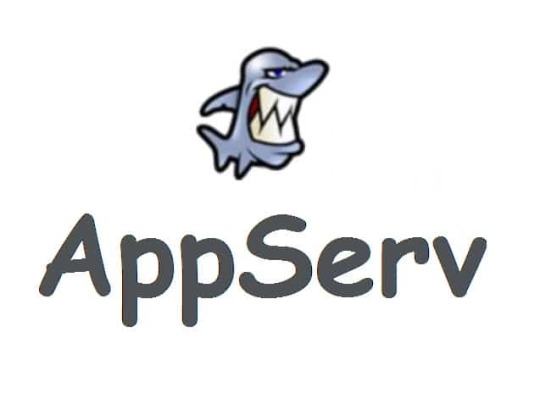
This program is considered one of the easiest and fastest programs to install and set up, as the entire process takes only one minute, according to statistics provided by the developers. It also includes all the required software such as: - Apache - PHP - MySQL - phpMyAdmin . All of these programs come in official versions because they are faster and perform better than versions developed individually or by unofficial teams. This program is developed to support the Windows operating system only, meaning it does not work on other popular systems such as Linux and Mac, but it is compatible with all versions of Windows, old and new. More information about AppServ Program - More information about AppServ Program and how to install WordPress locally using AppServ Program - To download AppServ Program (Windows operating system only) from the official website, click here.
3 – Instant WordPress Program
Instant WordPress Program is a simple and easy-to-use free program. As the name suggests, it enables the user to install and run any WordPress website locally instantly.
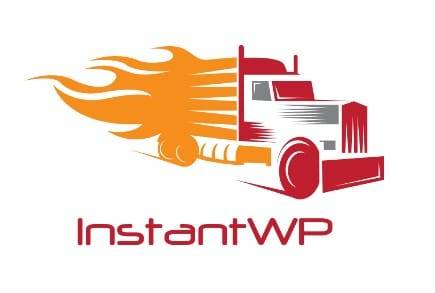
One of the most important features of Instant WordPress is that it can be used as a portable program, meaning it can be installed on any USB drive and run on any device, as long as it works on one of the supported operating systems without any problems. Instant WordPress makes a lot of work easier for developers and website owners; it allows them to experiment with changing themes, installing multiple plugins on websites, testing them, and evaluating their speed, quality of work, and their impact on the overall performance of the website, with the assurance that these results will be identical to the actual website on the server. It also offers a unique feature: the ability to test different SQL queries on your website by logging into the MySQLAdmin page, which provides all the options for PHPMyAdmin to the developer. You can view a comprehensive explanation of Instant WordPress and how to install WordPress locally on your computer using it. Note that this program supports both Windows and MacOS operating systems. To download Instant WordPress instantly from its official website, click here.
4 – Bitnami WordPress Stack
Bitnami WordPress Stack provides a local WordPress installation service with the click of a button, without having to delve into the complex details of the process, as it handles all the required work. It also contains many built-in WordPress features, the most important of which are: - Easily access and modify texts and HTML tags. - Supports the use of different roles and the distribution of permissions. - Supports thousands of diverse plugins for SEO, email, filtering, statistics, and much more. - Allows multiple users and provides the possibility of multi-blogging. - Provides official support for multiple languages. - The program is very safe to use and receives various periodic updates to maintain its high performance and distinguished security.

The program developers provide multiple versions that support (Windows – MacOS – Linux), and you can download it from its official website by clicking here. In a previous article, we provided a comprehensive explanation of the Bitnami WordPress Stack program and how to install WordPress on your computer using this program.
5 – BitNami Multisite Program
BitNami Multisite Program was developed by the same team that developed the previous program, Bitnami WordPress Stack. This program works in the same way as the previous program, allowing you to install WordPress locally. However, what distinguishes it from its predecessor is that it is directed at users who own large websites or blogs that have multiple subsites. This network of websites can share plugins, themes, organization, user groups, and much more. This is where the main benefit of this program comes in: it allows the user to control their main website and all of its subsites and apply various modifications to the entire network locally to detect any potential problems before they are applied to the main server.

You can install WordPress on your computer after installing BitNami Multisite on one of the following operating systems: Windows, Linux, or MacOS. This is done in the same way as installing the previous program. You can also download it from its official website from here.
6 – DesktopServer
DesktopServer is a great program developed to create multiple virtual servers for testing and developing plugins and themes locally. All servers created by it can be accessed through a browser using a specific server name such as www.testsite.dev.
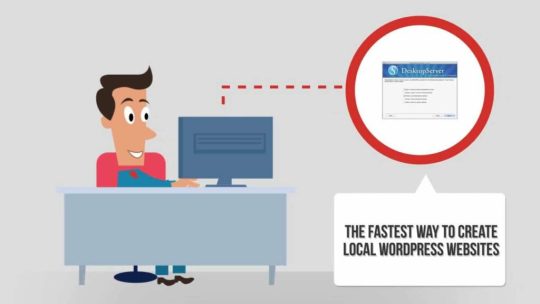
This program supports installing WordPress on a local server on your personal computer. It is a very simple and easy program to set up and does not require the user to make any manual modifications to configuration files such as wp-config.php or .htaccess files. The program offers a very large group of important features, including: - Supports Apache and MySQL servers. - Supports PHP 7.3. - Supports SSL protocol. - Includes Xdebug tools. - Supports Windows and Macintosh systems. All of the previous features are available in the free version of the program, which is called DESKTOPSERVER LIMITED. While the paid version, which costs $99.95 and is called DESKTOPSERVER PREMIUM, offers a much larger group of features and options to help developers. To read an explanation of DesktopServer, click here. To download the free version of the program or purchase the paid version through the official website of the program, click here. Thus, we have presented to you the best programs used to install WordPress on the computer locally, which will greatly help you in managing and developing your own websites. If you have any questions or inquiries, we will be more than happy to answer them, so do not hesitate to ask your questions in the comments. Read the full article
0 notes
Text
sql server online course Elevate your career with our SQL Certification Course. Comprehensive SQL Server training online for success in the data-driven world.
sql certification course , sql server training online , sql server tutorial , sql server online course , sql server download
#sql certification course#sql server training online#sql server tutorial#sql server online course#sql server download#data analytics#msbi#power bi#power bi course#power bi course fees#power bi certification cost#power bi certification#sql#education#power bi online training
1 note
·
View note
Text
DirectDeals|SQL Server Download|Windows Server 2019 Download
DirectDeals is recognized in Microsoft Partner Network as a proud participant and Cloud Solution Provider Program (CSP). The MPN allows DirectDeals to provide its customers direct access to the Microsoft Open Licensing and Open Volume programs. The customers are also allowed access to various Check out more details here: https://www.directdeals.com/software/microsoft-office/office-2021
#DirectDeals Blog#SQL Server Download#Windows Server 2019 Download#Microsoft Windows 11 Pro Download#Microsoft Office 2021 Download
0 notes
Text
Getting Started with SSMS for Big Data Analysis
In today's data-driven world, effective data management and analysis are crucial for any organization. SQL Server Management Studio (SSMS) is a powerful tool that helps manage SQL Server databases and analyze big data efficiently. This blog will guide you through the basics of SSMS, focusing on installing and setting up the software, connecting to various data sources, querying structured data, creating and managing databases, and understanding performance tuning basics. By the end, you'll have the foundational knowledge needed to leverage SSMS for big data analysis.
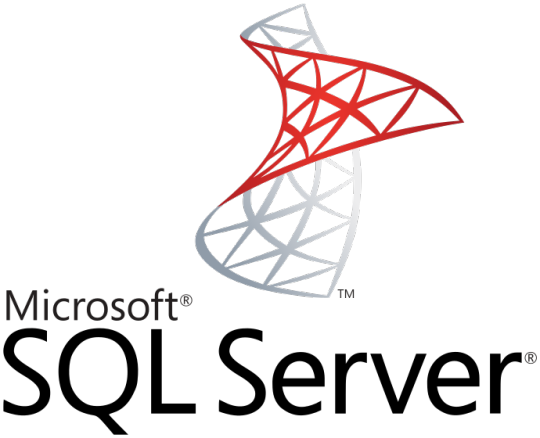
SQL Server
Installing & Setting Up SQL Server Management Studio (SSMS)
Before diving into data analysis, you need to have SSMS installed on your machine. Follow these steps to get started:
Download SSMS: Visit the official Microsoft website to download the latest version of SSMS. Ensure your system meets the necessary requirements before proceeding.
Install SSMS: Run the installer and follow the on-screen instructions. The installation process is straightforward and user-friendly.
Launch SSMS: Once installed, open SSMS. You'll be greeted with a login screen where you can connect to a SQL Server instance.

SSMS
Connecting to Data Sources
With SSMS ready, the next step is connecting to your data sources. Here's how you can accomplish this:
Server Connection: In the SSMS login screen, enter your server name and choose the appropriate authentication method (Windows or SQL Server Authentication).
Database Selection: After connecting to the server, you'll see a list of databases in the Object Explorer. Select the database you wish to work with.
Data Import: SSMS allows you to import data from various sources, such as Excel, CSV files, or other databases. Use the Import and Export Wizard for this purpose.
Querying Structured Data
One of the primary functions of SSMS is to query structured data using SQL. Here's a basic overview:
Query Editor: Open a new query window from the toolbar to start writing SQL queries.
Select Statements: Use SELECT statements to retrieve data from tables. You can filter, sort, and aggregate data as needed.
Joins and Subqueries: Leverage JOIN clauses to combine data from multiple tables and use subqueries for more complex data retrieval.
Creating and Managing Databases
Creating and managing databases is a critical skill for any data professional. SSMS simplifies this process:
Creating a Database: Right-click on the “Databases” node in Object Explorer and select “New Database.” Follow the prompts to define database properties.
Managing Tables: Within each database, you can create, alter, or delete tables. Use the table designer for a visual approach or write SQL scripts for precise control.
Backup and Restore: Regularly back up your databases to prevent data loss. SSMS provides tools for both backup and restore operations.
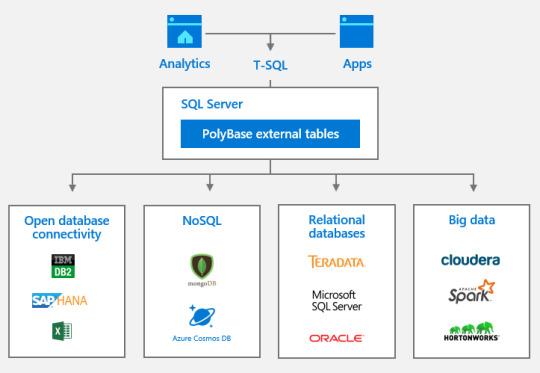
Managing SQL Server Databases
Performance Tuning Basics
Optimizing database performance is essential when dealing with big data. Here are some basic performance tuning concepts:
Indexing: Create indexes on frequently queried columns to speed up data retrieval.
Query Optimization: Analyze query execution plans and identify bottlenecks. Rewrite inefficient queries to improve performance.
Monitoring Tools: Utilize SSMS's built-in monitoring and diagnostic tools to keep track of database health and performance metrics.
FAQ
1. What is SSMS, and why is it important for big data analysis?
SSMS is a comprehensive tool for managing SQL Server databases, crucial for big data analysis due to its ability to handle large datasets efficiently, provide robust querying capabilities, and offer various data management features.
2. Can SSMS connect to non-SQL Server databases?
Yes, SSMS can connect to various data sources, including non-SQL Server databases, using ODBC drivers and linked server configurations.
3. How can I improve the performance of my SQL queries in SSMS?
You can enhance SQL query performance by creating indexes, optimizing queries for better execution plans, and utilizing SSMS's built-in performance tuning tools.
4. Is SSMS suitable for beginners in data analysis?
Absolutely! SSMS is designed to be user-friendly, making it accessible for beginners while offering advanced features for experienced users.
5. How do I keep my SSMS up to date?
Regularly check the Microsoft website or enable automatic updates within SSMS to ensure you're using the latest version with all the recent features and security updates.
Home
instagram
youtube
#SSMS#SQLServer#DatabaseManagement#BigDataAnalytics#SQLTools#DataEngineering#TechTutorial#SunshineDigitalServices#MicrosoftSQL#QueryMastery#Instagram#Youtube
0 notes
Text
Top 10 Powerful Features of PHP Every Developer Should Know

PHP (Hypertext Preprocessor) has been a dominant scripting language in web development for over two decades. From small-scale websites to massive content management systems like WordPress and Drupal, PHP powers a large portion of the web. But what makes it so popular and effective? In this blog, we'll dive deep into the top 10 powerful features of PHP every developer should know.
Whether you're just starting out or looking to deepen your understanding, these features showcase why PHP continues to be a go-to choice for server-side development.
1. Open Source and Free
One of the most appealing features of PHP is that it’s completely free and open-source. Developers can download, install, and use PHP without paying licensing fees. Moreover, being open-source means it has a large and active community contributing to its ongoing development and support.
Why it matters: This accessibility makes PHP a great starting point for students, freelancers, and startups looking to build dynamic websites without high initial costs.
2. Platform Independent
PHP is platform-independent, meaning it can run on any operating system—Windows, Linux, macOS, or Unix. This flexibility allows developers to deploy PHP applications across different environments without major code changes.
Why it matters: Platform independence ensures easy integration with existing systems and hosting environments.
3. Simple and Easy to Learn
PHP is known for its straightforward syntax, which closely resembles C and Java. This makes it easy for developers with programming experience to pick it up quickly. Even beginners find PHP approachable due to its readable code structure and supportive documentation.
Why it matters: A short learning curve means developers can quickly start building real-world applications.
4. Supports Database Integration
PHP seamlessly connects with various databases like MySQL, PostgreSQL, MongoDB, Oracle, and more. With built-in functions like mysqli_connect() and support for PDO (PHP Data Objects), managing data is fast and secure.
Why it matters: Efficient database connectivity is crucial for building data-driven applications such as blogs, e-commerce platforms, and CRMs.
5. Extensive Library of Built-in Functions
PHP provides a vast set of built-in functions that allow developers to perform a wide range of tasks—string manipulation, file handling, form validation, session control, and much more—without the need for third-party libraries.
Why it matters: Built-in functions speed up development and reduce reliance on external code, leading to cleaner and more maintainable applications.
6. Strong Community Support
With millions of developers using PHP globally, there’s a massive community behind it. You’ll find plenty of resources, tutorials, forums, Stack Overflow threads, and open-source tools available at your fingertips.
Why it matters: A strong community means fast troubleshooting, regular updates, and ongoing evolution of the language.
7. Powerful Frameworks
PHP boasts several powerful frameworks such as Laravel, Symfony, CodeIgniter, Zend, and Yii. These frameworks follow the MVC (Model-View-Controller) architecture and offer built-in tools for routing, authentication, and templating.
Why it matters: Frameworks enhance productivity, enforce coding standards, and help developers build scalable and secure applications faster.
8. Robust Security Features
PHP includes various security mechanisms to help developers build secure applications. Features like data encryption, input validation, and built-in support for session handling protect against common threats like SQL injection, XSS (Cross-Site Scripting), and CSRF (Cross-Site Request Forgery).
Why it matters: Security is critical in web development, and PHP provides the tools necessary to safeguard your applications.
9. Efficient Performance and Scalability
PHP scripts are executed on the server, and thanks to its efficient memory usage and processing speed, PHP delivers quick load times. It’s also scalable—Facebook’s early version was built on PHP, showing its capacity to handle massive user bases.
Why it matters: Performance and scalability ensure PHP applications can grow with your business or user demands.
10. Integration with Other Technologies
PHP integrates smoothly with a wide range of technologies—HTML, CSS, JavaScript, XML, JSON, REST APIs, and more. It also works well with third-party services like payment gateways, cloud storage, and analytics tools.
Why it matters: Seamless integration enables developers to build feature-rich, modern web applications that meet current tech standards.
Conclusion
These top 10 powerful features of PHP highlight why the language remains a dominant force in web development. Its simplicity, flexibility, and extensive support system make it a smart choice for developers across all experience levels.
Whether you're building a small personal blog or a high-traffic e-commerce site, PHP has the features, tools, and scalability to support your goals. Learning PHP not only opens doors to freelance and full-time development opportunities but also provides a solid foundation for backend development in general.
So, if you haven’t explored PHP yet or only know the basics, now is the perfect time to dive deeper and unlock its full potential!
Keyword Focus: Top 10 Powerful Features of PHP Every Developer Should Know, features of PHP, why use PHP, PHP for web development.
0 notes
Text
Power BI: The Ultimate Tool for Business Intelligence and Data Visualization
In today's data-driven world, businesses need tools that help them turn raw data into actionable insights. Power BI, a powerful business analytics tool by Microsoft, enables organizations to visualize their data, share insights across teams, and make confident decisions. Whether you're a data analyst, business owner, or student, learning Power BI can transform how you understand and use data.
What is Power BI?
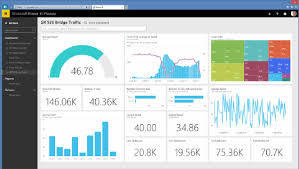
Power BI is a business intelligence (BI) and data visualization tool developed by Microsoft. It allows users to connect to multiple data sources, transform raw data into meaningful reports, and create interactive dashboards that help monitor business performance in real time.
Key Features of Power BI
Power BI offers a wide range of features that make it one of the most popular BI tools today:
📊 Data Visualization – Create interactive charts, graphs, and dashboards
🔄 Real-Time Data Updates – Monitor data live from cloud services and APIs
🔗 Data Connectivity – Connect to Excel, SQL Server, SharePoint, Google Analytics, and more
📁 Data Modeling – Use Power Query to clean, transform, and shape your data
🧠 AI-Powered Analytics – Use AI visuals and natural language queries
💻 Cloud and Desktop Versions – Power BI Desktop (free) and Power BI Service (cloud-based)
Benefits of Using Power BI
1. User-Friendly Interface
Power BI has an intuitive drag-and-drop interface, making it easy even for non-technical users to create complex dashboards.
2. Cost-Effective
The Power BI Desktop version is free, and the Pro version is affordable for businesses of all sizes.
3. Real-Time Insights
With automatic data refresh and real-time dashboards, you can make decisions based on the latest data.
4. Seamless Integration
Power BI integrates easily with Microsoft tools like Excel, Azure, and Teams, as well as third-party services like Salesforce and Google Analytics.
5. Scalability
From startups to enterprises, Power BI can scale as your data needs grow.
How Power BI Works
Power BI works through three main components:
Power BI Desktop – Used for designing reports and dashboards on your computer
Power BI Service – Online platform for sharing and collaboration
Power BI Mobile App – Access dashboards and reports on your phone or tablet
Power BI Use Cases
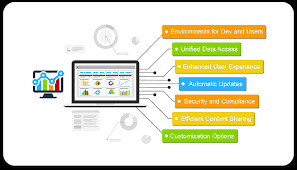
Power BI is widely used across industries:
Finance – Visualize budgets, revenue, and expenses
Sales – Track sales performance and pipeline forecasts
Marketing – Monitor campaign performance and website analytics
HR – Analyze employee engagement and recruitment metrics
Education – Assess student performance and administrative efficiency
Power BI vs Other BI Tools
FeaturePower BITableauGoogle Data StudioEase of UseVery EasyModerateEasyIntegrationExcellent (Microsoft)Good (varied)Good (Google-based)PriceAffordableExpensiveFreeAI CapabilitiesBuilt-in AI toolsLimitedBasic
Getting Started with Power BI
Download Power BI Desktop from Microsoft’s official site (free)
Connect to your data (Excel, databases, or online services)
Clean and transform your data using Power Query
Create visuals and dashboards
Publish to Power BI Service to share with your team
Best Practices for Power BI Users
Use filters and slicers for better user interaction
Optimize data models for faster performance
Implement role-level security (RLS) for data privacy
Choose the right chart types for better storytelling
Schedule data refreshes for real-time analysis
Conclusion
Power BI is a game-changing tool for anyone who works with data. Its combination of ease of use, powerful features, and integration capabilities make it ideal for businesses and professionals who want to make data-driven decisions. As industries continue to rely on analytics, mastering Power BI is not just a skill—it's a career advantage.
0 notes
Text
Enhance Workflow Efficiency with the Visio Computer Program

In today's fast-moving digital environment, clarity and communication are essential. Whether you're managing a project or designing a complex system, visuals help convey ideas faster and better. The Visio computer program offers powerful diagramming tools to transform concepts into professional visuals that teams can easily understand and act on.
Let’s explore how this tool boosts productivity, simplifies technical design, and supports real-time collaboration in any organization.
What Is the Visio MS Software?
Visio MS is Microsoft’s diagramming and vector graphic application. It helps users create detailed visuals like:
Flowcharts
Network diagrams
Floor plans
Organizational charts
Business process models
Visio is designed for professionals who want to turn complex data into easy-to-understand visuals. With simple drag-and-drop features, anyone can design diagrams without graphic design knowledge.
Key Features of the Visio Computer Program
The Visio computer program includes many features that make it ideal for business and IT use. These features are designed to streamline tasks and improve efficiency.
Templates for Every Need
Visio offers hundreds of built-in templates, so you don’t have to start from scratch. Simply choose a template and customize it to fit your needs.
Integration with Microsoft 365
Visio works seamlessly with other Microsoft tools like Excel, Word, and Teams. This integration boosts collaboration and lets teams work within familiar platforms.
Cloud-Based Collaboration
Using the cloud version of Visio MS, teams can edit diagrams in real time. It allows multiple users to work on a project together, whether in the office or remotely.
Data-Driven Diagrams
Visio lets you link diagrams to live data. Connect to Excel, SQL Server, or SharePoint, and your diagrams will update automatically as the data changes.
Why Businesses Prefer Visio MS
Using Visio MS brings structure to complex information. Businesses prefer it because it saves time, reduces miscommunication, and enhances project clarity.
For Project Managers
Project managers can map out workflows, assign tasks visually, and identify bottlenecks. Gantt charts, flow diagrams, and swimlane diagrams help teams stay on track.
For IT Professionals
IT professionals use Visio for network diagrams, system architecture maps, and security flowcharts. These visuals are vital when presenting data to teams or stakeholders.
For Engineers and Architects
From building layouts to process blueprints, engineers use Visio to design with precision. It supports AutoCAD integration, making it versatile for technical design.
How to Get Started with the Visio Computer Program
Getting started with Visio computer program is quick and easy. Here are the steps:
Visit a trusted reseller.
Select the version that fits your needs—Standard or Professional.
Purchase a license and download the software.
Install and activate using your unique key.
Start designing immediately.
Whether you're new to diagramming or a seasoned user, Visio makes the process simple.
Choosing the Right Visio Version
Visio is available in several versions. The Standard version suits basic users. The Professional version includes advanced templates and data linking. The Online Plan, part of Microsoft 365, supports cloud collaboration.
Before purchasing, assess your needs. If you handle large projects or work in IT or engineering, choose the Professional or Online plan.
Benefits of Buying from Verified Sellers
When buying software online, it’s essential to purchase from an authorized source. Purchasing Visio MS from a reliable seller ensures:
A genuine product key
Access to updates and technical support
Protection against malware
Compliance with software licensing laws
Avoid free or pirated versions. They might lead to performance issues, data loss, or even legal trouble.
Visio for Remote Teams
Remote work is now common. The Visio computer program allows teams to collaborate even when working miles apart. By sharing files through Microsoft OneDrive or SharePoint, users can edit diagrams live and provide instant feedback.
Features that support remote teams include:
Real-time editing
Commenting tools
Version control
Secure file sharing
These features keep teams aligned and improve productivity regardless of location.
Final Thoughts on Visio MS
If you deal with data, processes, or systems, Visio is a must-have tool. It turns abstract information into clean, informative visuals that drive decisions and understanding.
The Visio computer program offers unmatched flexibility, whether you're designing flowcharts, network diagrams, or business models. With cloud-based access, collaborative tools, and Microsoft integration, it fits right into your existing workflow.
To get the most out of it, always buy from a reliable vendor and select the version that fits your specific use case. Invest in Visio MS and give your team the power to see, design, and deliver with confidence.
0 notes